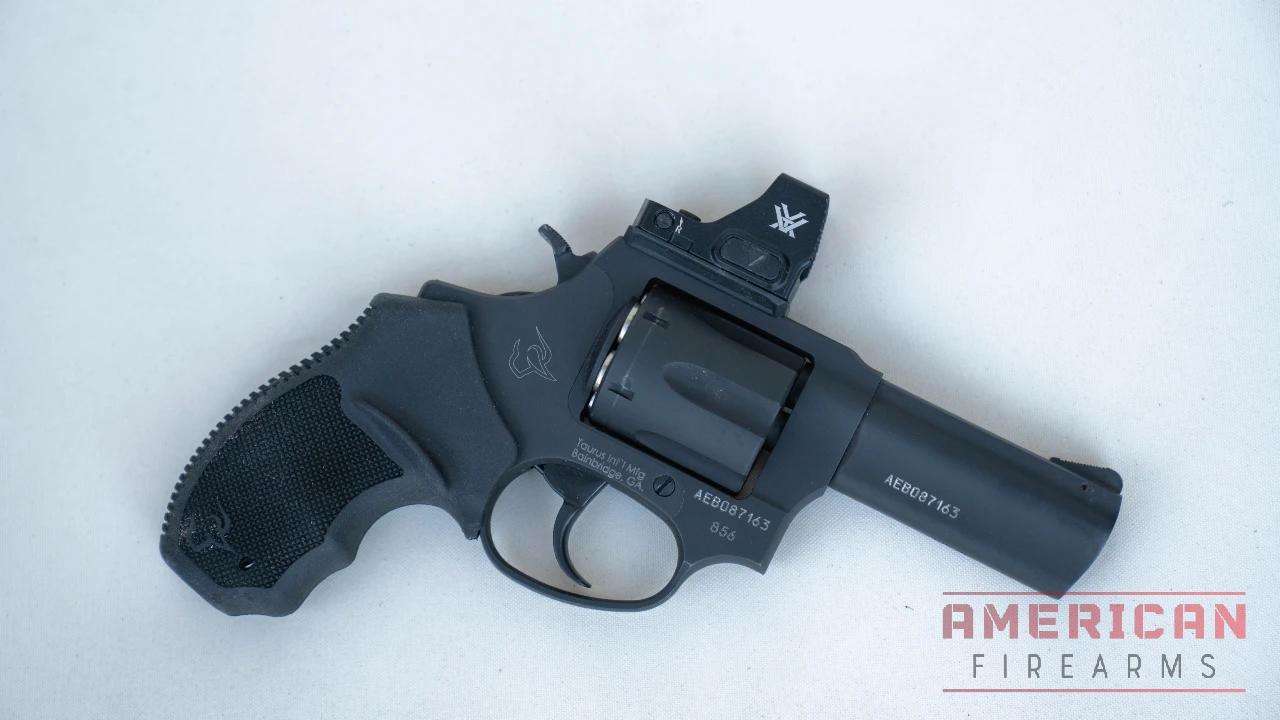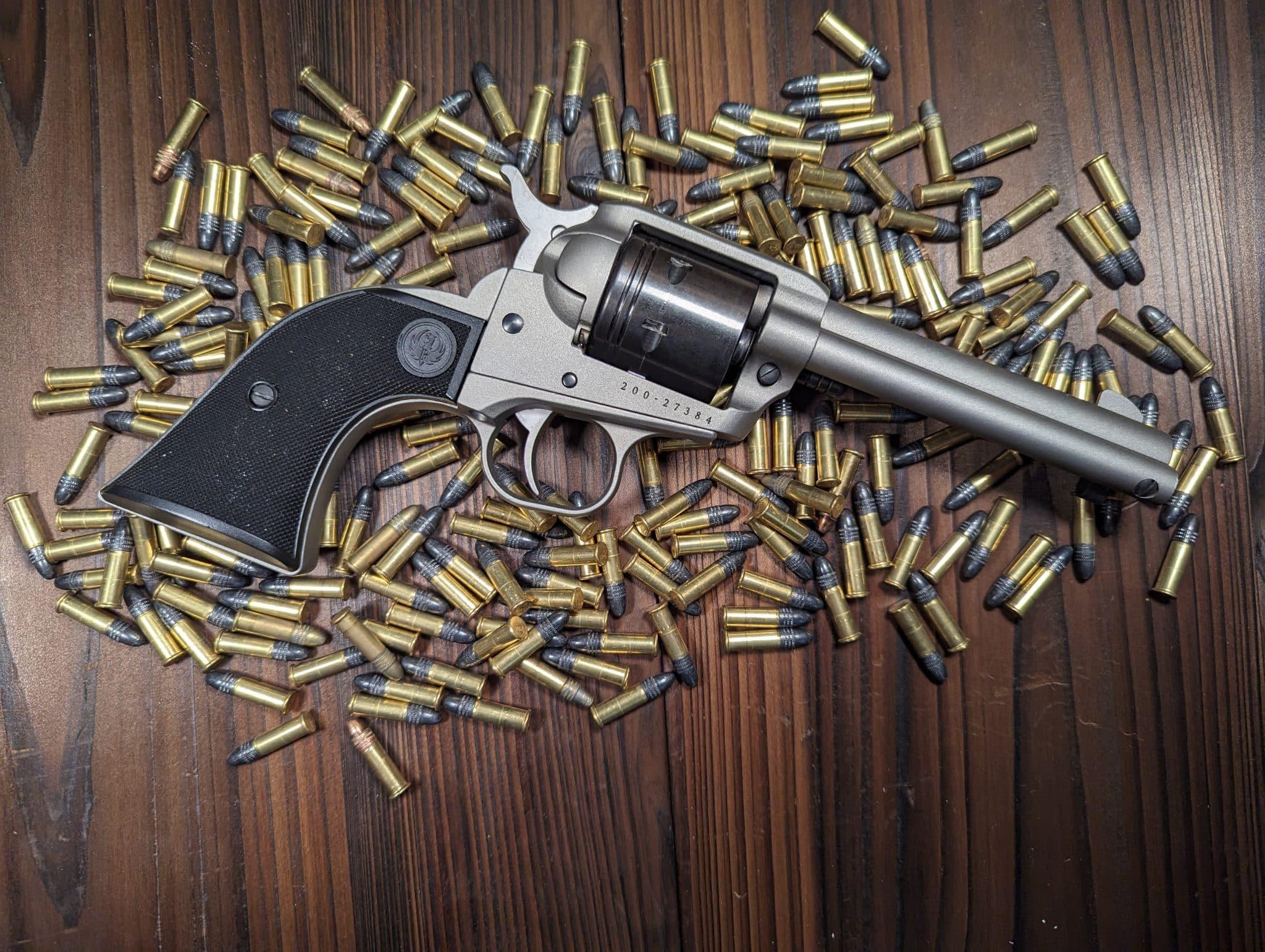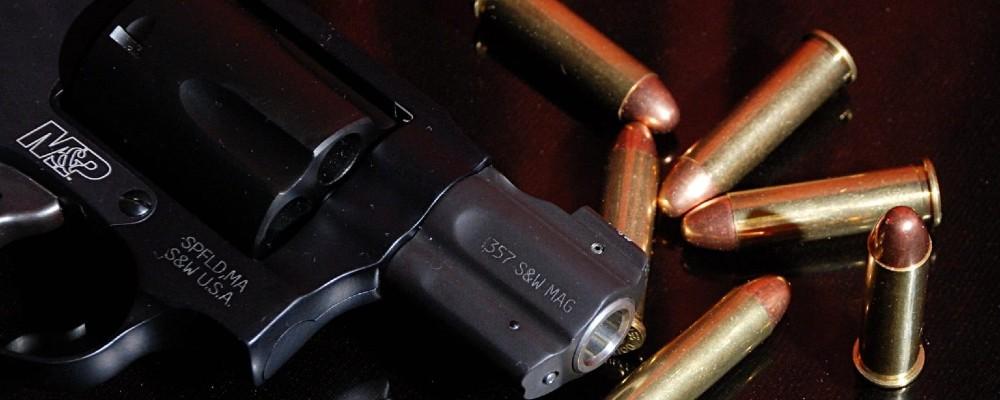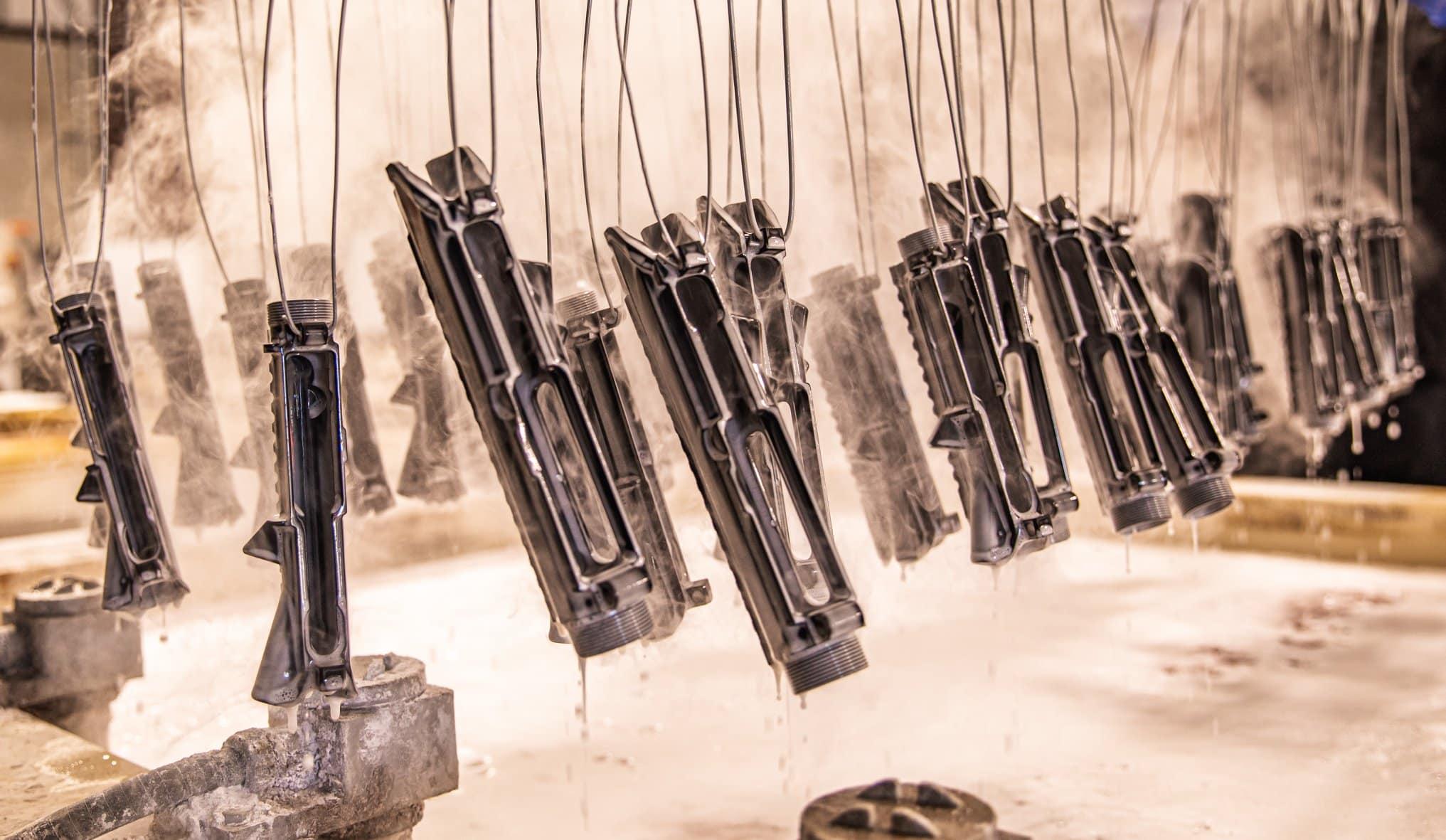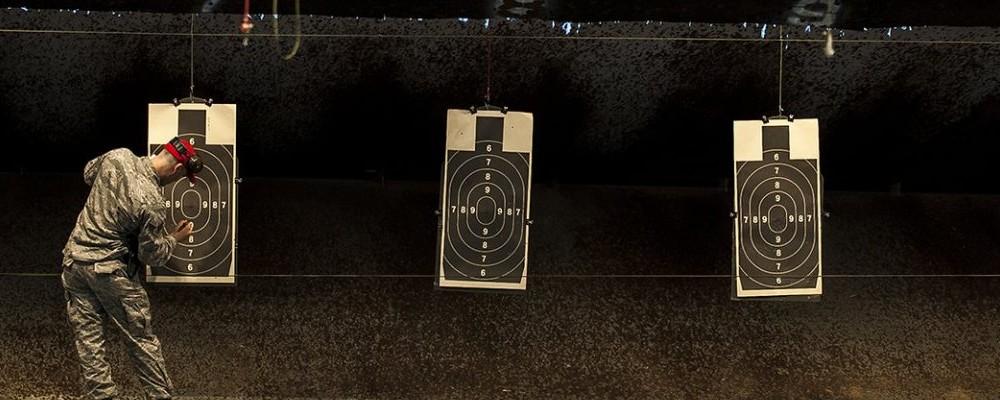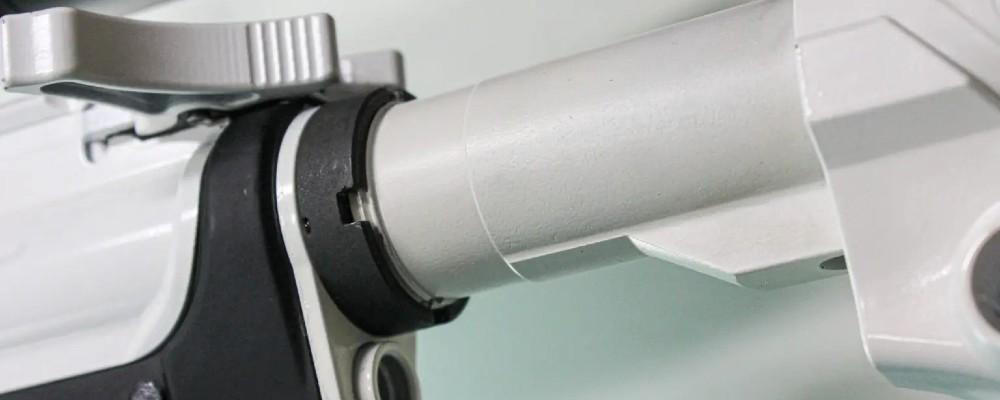Double Tap: Should You Use Weapon Mounted Lights on Carry Guns?
Written By
Michael Crites
Licensed Concealed Carry Holder
Reviewed by
Editorial Team
Learn About The Editorial Team
Share:
Products are selected by our editors. We may earn a commission on purchases from a link. How we select gear.
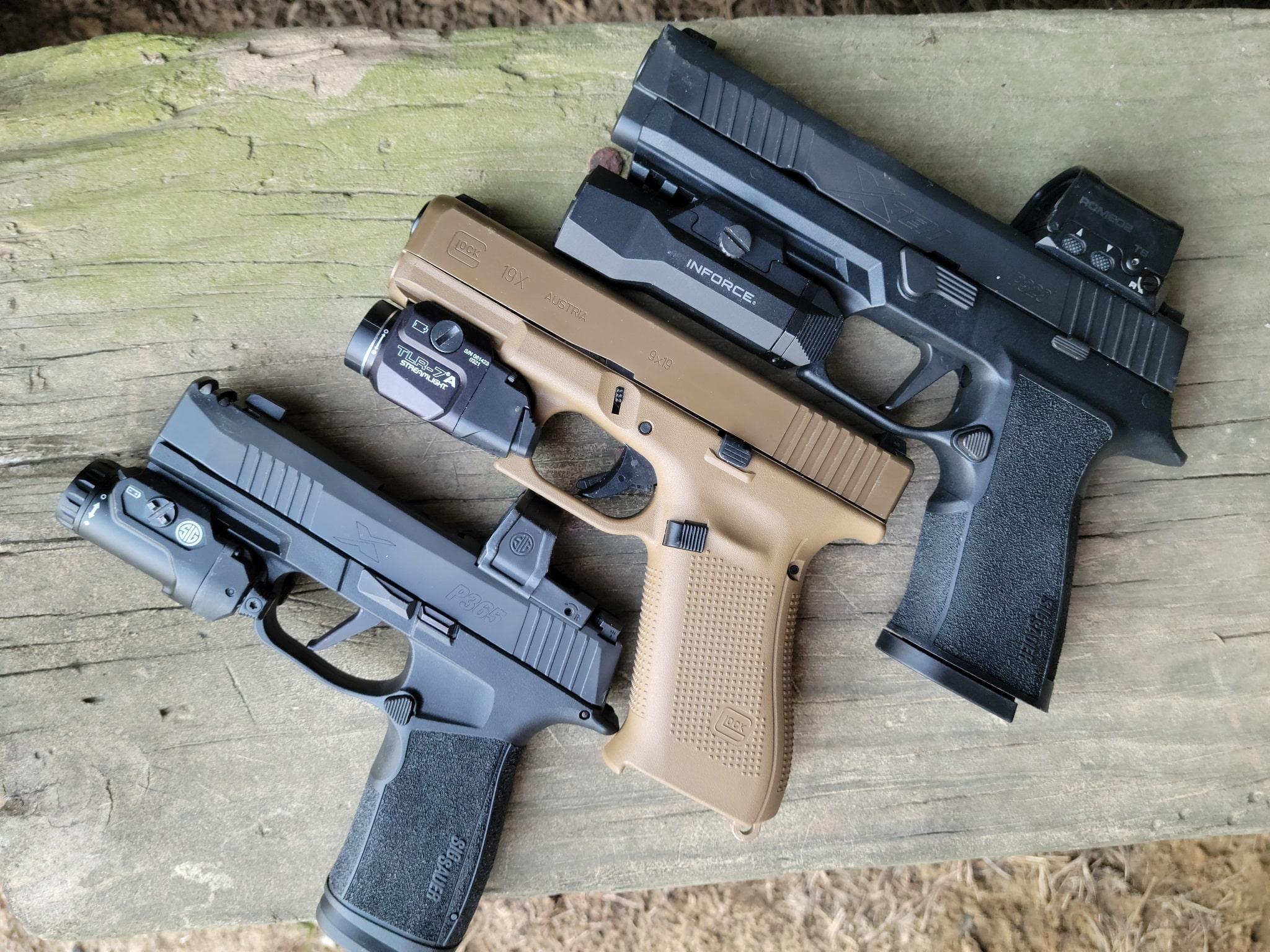
Updated
Jan 2023
“Double Tap” is an occasional opinion series where we look at two sides of a trend or topic in the market.
Here at American Firearms, we are launching a new “Double Tap” series where we look at two sides of a trend or topic in the market. This installment tackles weapon-mounted pistol lights and why you would (or would not) want them crowding the accessory rail of a carry gun.
In This Article
What is a WML anyway?
Weapon-mounted lights date back to at least the 1900s, with several early patents filed for battery-powered torches that could be attached to firearms in assorted ways.
Some were even notoriously used by a certain toothbrush-mustached dictator’s guards on the night shift in the 1930s and 40s. Cold War-era special operators were soon attaching full-sized flashlights to their MP5s and XM177s for those quiet late-night visits.

Today’s modern WML in terms of pistols dates to 1979 when Surefire introduced their Model 310 Tactical Light. Designed to mount to a Colt 1911-style pistol, it only offered 15 lumens from a single 123A lithium battery.
These days, pistol-mounted WMLs abound from the likes of not only Surefire– who is still very much in the game after 40-plus years– Streamlight, Modlight, Sig Sauer, InForce, ThruNite, and OLight. The school of thought behind the use of such very handy lights on carry pistols varies.

Pros: Lights on Pistols Just Make Sense
The world we live in is dark a lot of the time. Besides the naturally occurring cover of night and twilight, humans often wind up visiting places such as windowless buildings and underground structures for work, life, and play.
While the latter are typically lit, that is not always a guarantee and, in the event of a power failure (or someone simply turning off the lights), one can suddenly be left in a place as dark as the deepest cave on the planet.
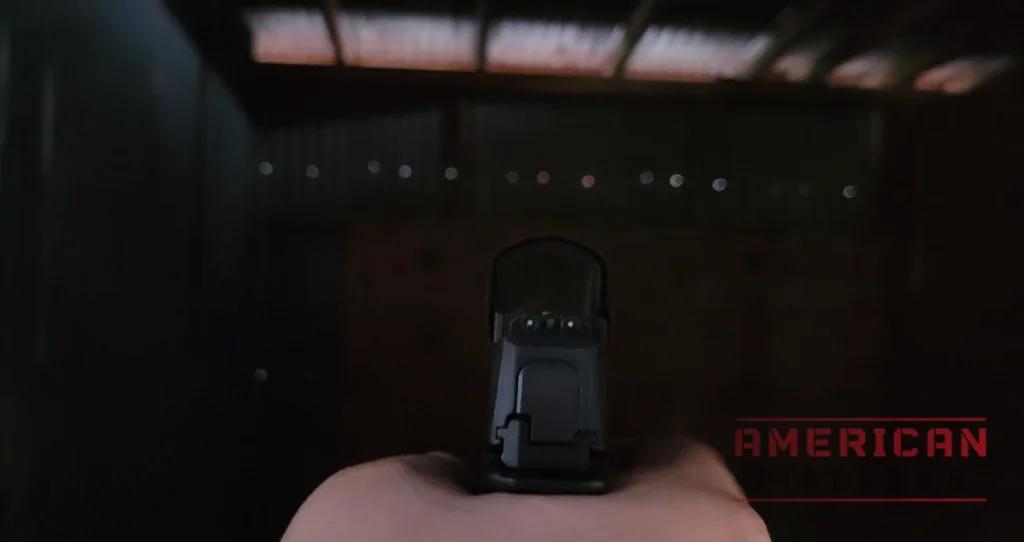
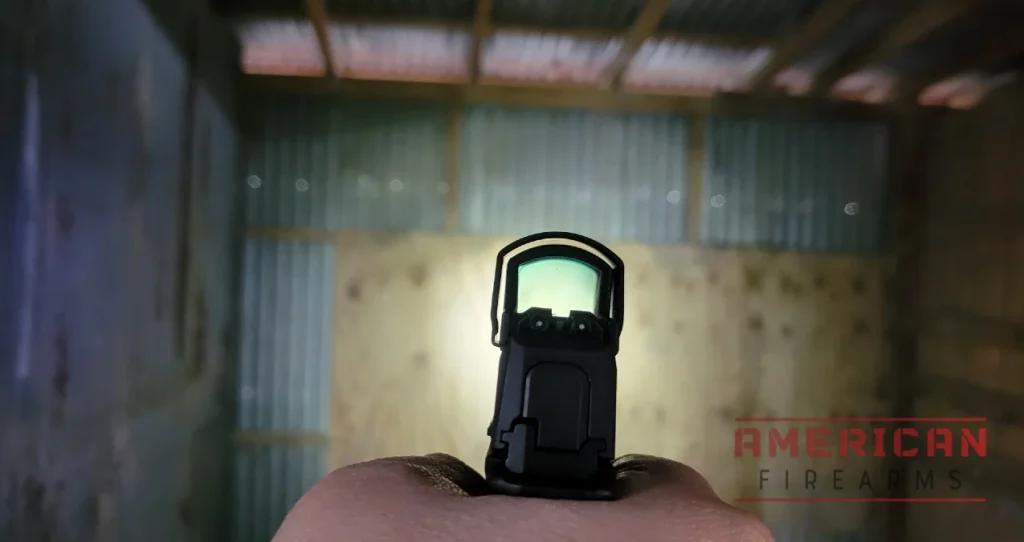
In those periods of low or no light, it is still very possible that a threat can emerge– thus the need for some source of light that can be used to provide positive identification (PID) to make sure you are not literally taking a shot in the dark with a potentially disastrous outcome.
With that, it is easy to see the need for a strong light, one that is capable of both producing a good “throw” (reaching out over a distance, enabling it to show both a subject’s face and hands from far away) and “spill” or “flood” (illuminating a broad area to provide better situational awareness to the peripherals).
Remember the old adage of “every shot fired ends up in court” isn’t far off base and engaging a misidentified person can quickly lead to both criminal charges and civil liability.
A light can help alleviate this pitfall.
One-handed use
“But I carry a light already,” is the argument for those who eschew the use of a weapon-mounted light in favor of a separate hand-held flashlight instead.
The problem with this is that, unless you have some sort of clip or band that allows you to strap it around your head and clamp it on your clothes, you are going to have to hold and operate that standalone light with one of your hands, meaning you are compromising a good two hand grip in most instances.
You can go further in the weeds on this with specialty accessories such as Chris Costa’s Thrym Switchback light ring device, but realistically that just adds bulk to your light and extra training time needed to use it instinctively in a high-stress situation.
A good, modern weapon-mounted light will enable a natural two-handed grip– important for weapon retention, control, and accuracy– while still allowing the user to trigger either a momentary light flash or a longer illumination while still having the firearm at the ready.
Adding an extra layer to this, should the user have to use their off-hand to do tasks such as opening or closing doors, holding back an animal such as a dog, or guiding a child or vulnerable adult, a WML-equipped handgun can still be used in the strong hand. In contrast, those who argue for a separate light and handgun arrangement will invariably lose most of their light cone while trying to use their other hand– possibly to include dropping the flashlight at the same time.
Going even further, for those who want the light+gun alternative rather than a WML, this means training to regularly draw and present both, with one in each hand.
Not impossible by any means, but for those who rarely put in regular time in dry fire and draw stroke drills already, throwing in a separate light to the mix isn’t going to help cut down on the fumble factor.
Close Contact
Just about every study on gunfights– which granted are usually in law enforcement cases– most engagements occur at close ranges, typically at distances closer than 10 yards. Inside this envelope, a subject is only a generous step or two away from being able to lunge out and lay hands on you.
If this occurs in a low light situation, and you have a handheld flashlight in one hand still trying to get a good PID, and a handgun in the other, this can rapidly turn sour.
However, a WML-equipped pistol allows the light and muzzle to keep natural alignment, even if it is necessary to use the off-hand to fend off a rush or move items such as furniture to get into a better position.
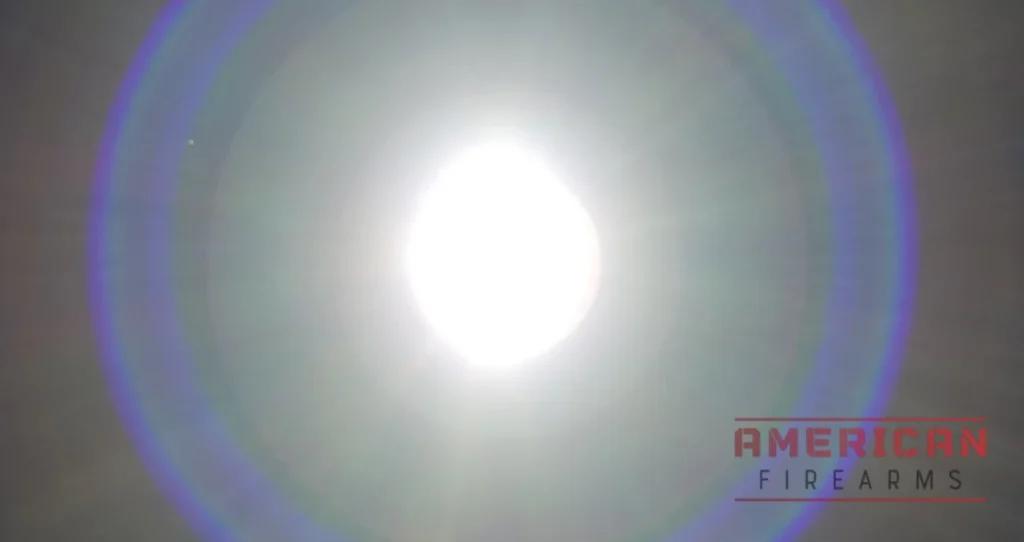
When getting into “bad breath” distances, and a subject is close enough to try to grab your handgun– a move that can easily push a semi-auto pistol out of battery and make it non-functional with just a quarter-inch worth of rearward pressure on the slide assembly– the extra inch of a large WML such as a Surefire X300 can allow a bit of leverage to counter and help with retention.
Cons: Leave the Light at Home
Weapon-mounted lights, be they for long arms like rifles and shotguns or handguns are, without a doubt, extremely useful when it comes to providing illumination, something that is of vital importance in a shoot/no-shoot style self-defense encounter.
However, for several reasons, they are not ideal for a concealed carry piece.
Holster issues
When it comes to carrying a pistol outfitted with a light, your whole holster game goes out of the window.
Sure, there are some holster makers (e.g., Vedder, Falco, We the People, Bravo Concealment, LAG Tactical, etc.) who will mix and match your pistol and light setup to provide you with a light-bearing holster, but your options are going to be limited.

If you have a common light and a common pistol, say a Glock 19 with a TLR-7, you can probably find someone who makes a decent (but bulky) holster for you.
But, if you have something more eclectic, like an FN 509 Compact MRD with a Modlite PL350, and the options, if any, can become limited.
Weight and length
There are a lot of lights out there and a very real dividing line between lumens/candela and bulk. In other words, the more powerful the beam, the bigger the light housing.
It is just the way it is.
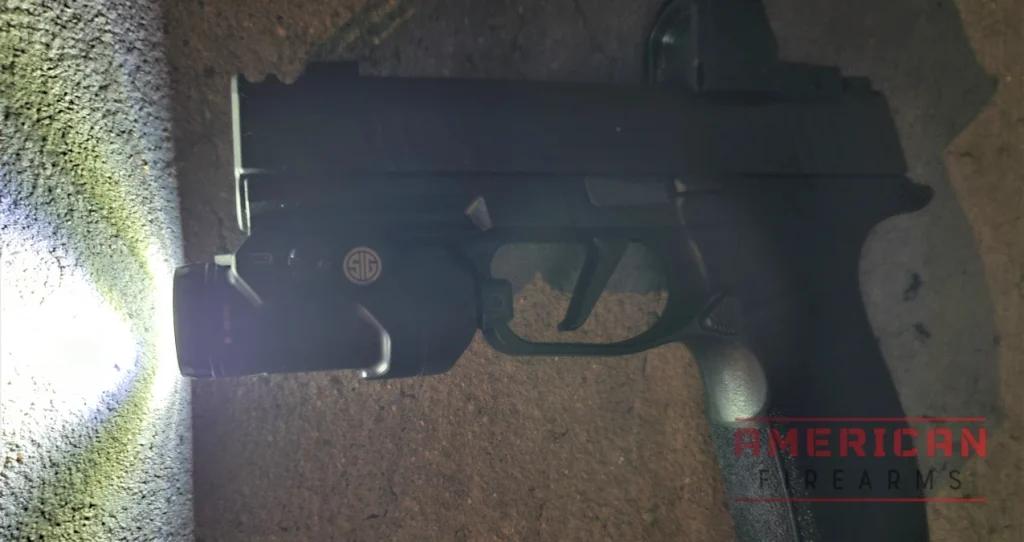
While you can go with something smaller and with a short profile like a 2.5-inch/2.39-ounce TLR-7, a WML family that will fit flush on many compact and sub-compact pistols, you see the illum cone available to you drop down to the 500-lumen/5000-candela region.
Stepping it up to a beast like the Surefire X300T-A Turbo– which delivers a stunning 650 lumen/66,000 candela of intense, tightly focused, far-reaching white light– you are now running 3.76 inches and 4.2 ounces.
Sure, it does not sound like a significant difference dimensionally, but when you add it to the dustcover accessory rail of a pistol, extra length and weight are telling, especially when trying to conceal a handgun in an AIWB position.
This can affect draw stroke, add a layer to training, and make carry awkward and uncomfortable, especially for those who spend a lot of time sitting at a desk or on long drives.
Off the rails
Handgun rails are when compared to the 125-year run of semi-auto pistols, a relatively new thing that has only popped up in the past generation.
To accommodate Surefire lights back in the 1980s and 1990s, primarily on assorted M1911s, Dawson Precision delivered a bolt-on rail Picatinny system, which the Marines used on Kimber ICQBs until Colt produced a purpose-designed .45 GI rail gun, the M45A1 CQBP, in 2012– just a decade ago.
Glock transitioned its 3rd Generation of full- and compact-sized pistols in 1999 to a hybrid accessory rail.
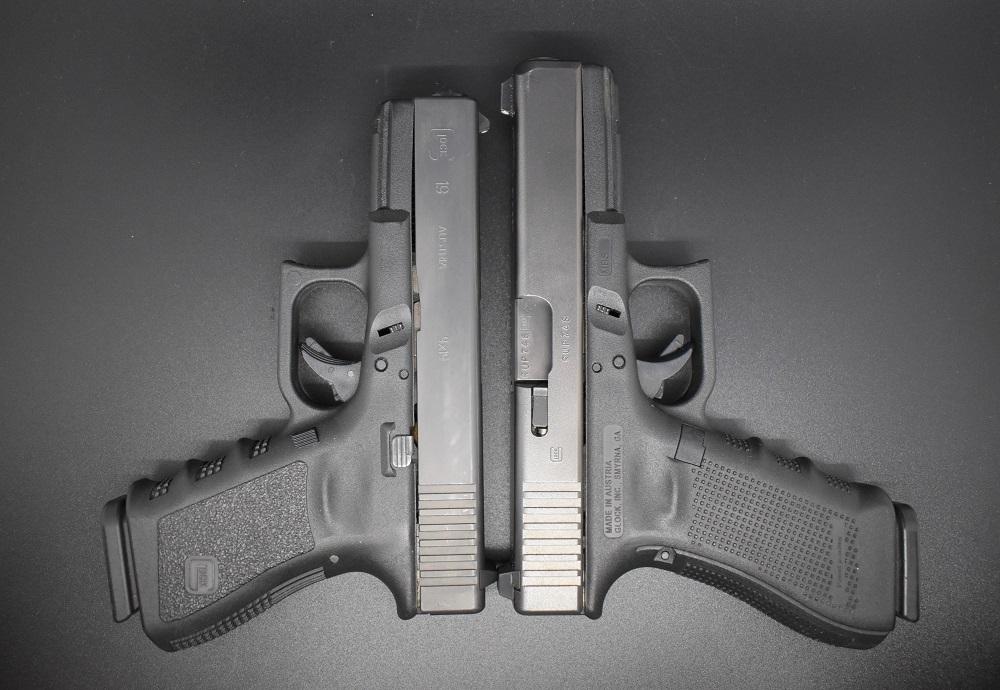
Sig Sauer only started introducing a lower Picatinny rail in front of the trigger guard of P220, P226, and P229 pistols in 2004, dubbing them “R” models at the time as the practice was so new.
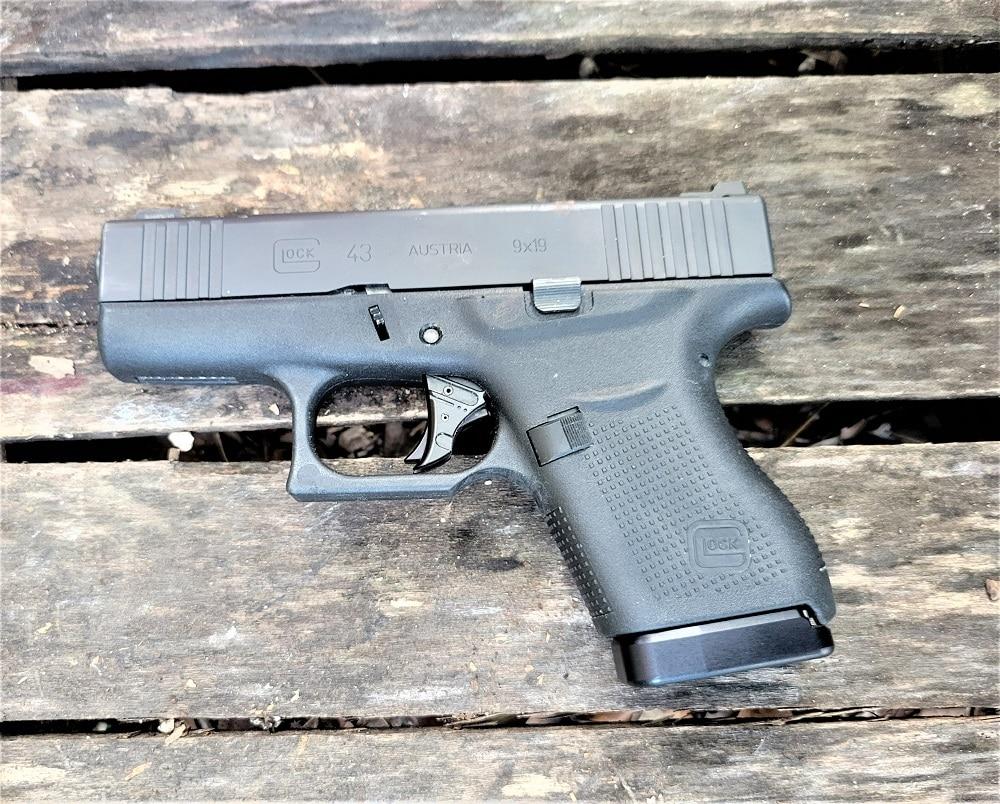
Today, while Pic rails on most modern semi-auto pistols are common, millions of “micro-9s” such as most Sig Sauer P365s and the Glock 43/43X/48, just don’t have workable accessory rails.
This puts them off the table when it comes to lights unless one picks up a rail adapter or different grip module.
Finding yourself in the dark
Potential rough encounters in near-total darkness are less likely to occur while out and about in normal urban/suburban life than at home during the night.
In short, do you really *need* the ability to throw 1,000 lumens in a situation while every day carrying to the local gym, gas station, or grocery store?
The likelihood of finding yourself in pitch-black darkness with a potential bad guy is much higher in a home defense scenario than in an EDC event outside of the home.
Typically, a potential carjacking or mugging isn’t going to happen inside a coal mine underground.
Red dot bloom-out
A problem early passive night vision gear suffered back in the day was “bloom out,” an effect that occurred when a bright light such as a muzzle flash, searchlight, or explosion would overwhelm the imager and turn everything white until the situation abated.

A rough parable to this is the combined use of a bright WML with a micro red dot pistol sight in a low-light situation. Just as when a red dot can be “washed out” and hard to see in bright daylight, hitting the paddle on a WML can make that dot or reticle vanish, something that a lot of folks who combine these two accessories don’t figure out as their flat-range training typically takes place in daylight or under indoor fluorescents and they aren’t running the WML.
As increasing numbers of pistol owners are electing to carry with optics mounted due to the increase in performance offered, this is something to keep in mind.
For many, WMLs are in the vein of being the perfect accessory for a home defense gun, where their extra weight and bulk are less of an issue.
Splitting the difference
Just like a firearm isn’t the only item one should have on their person while walking the Earth, typically adding things like an IFAK, knife, and multitool to the valet tray in preparation for leaving the house, a good standalone flashlight is a must.
While one can– and typically will– go years without needing to draw a pistol in an EDC situation, the circumstances in which a flashlight can come in handy are much more common. Little wonder that many of the same companies that make the better WMLs also make small yet powerful tactical flashlights that take up little room in one’s pocket.
There are even ridiculously small and inexpensive penlights such as the ThruNite T1 that run in the 1000-lumen range.
Not only can these lights be used in a modified two-handed grip in conjunction with a pistol if needed, but the light can also be used in a myriad of more mundane tasks– something you can’t say about a WML.
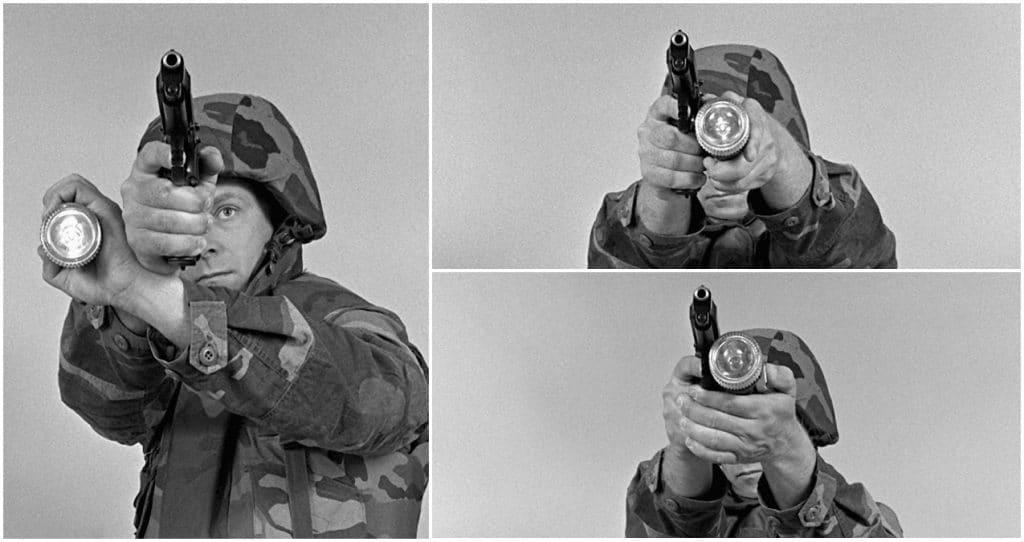
Sign up for our newsletter
Get discounts from top brands and our latest reviews!

